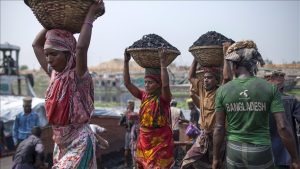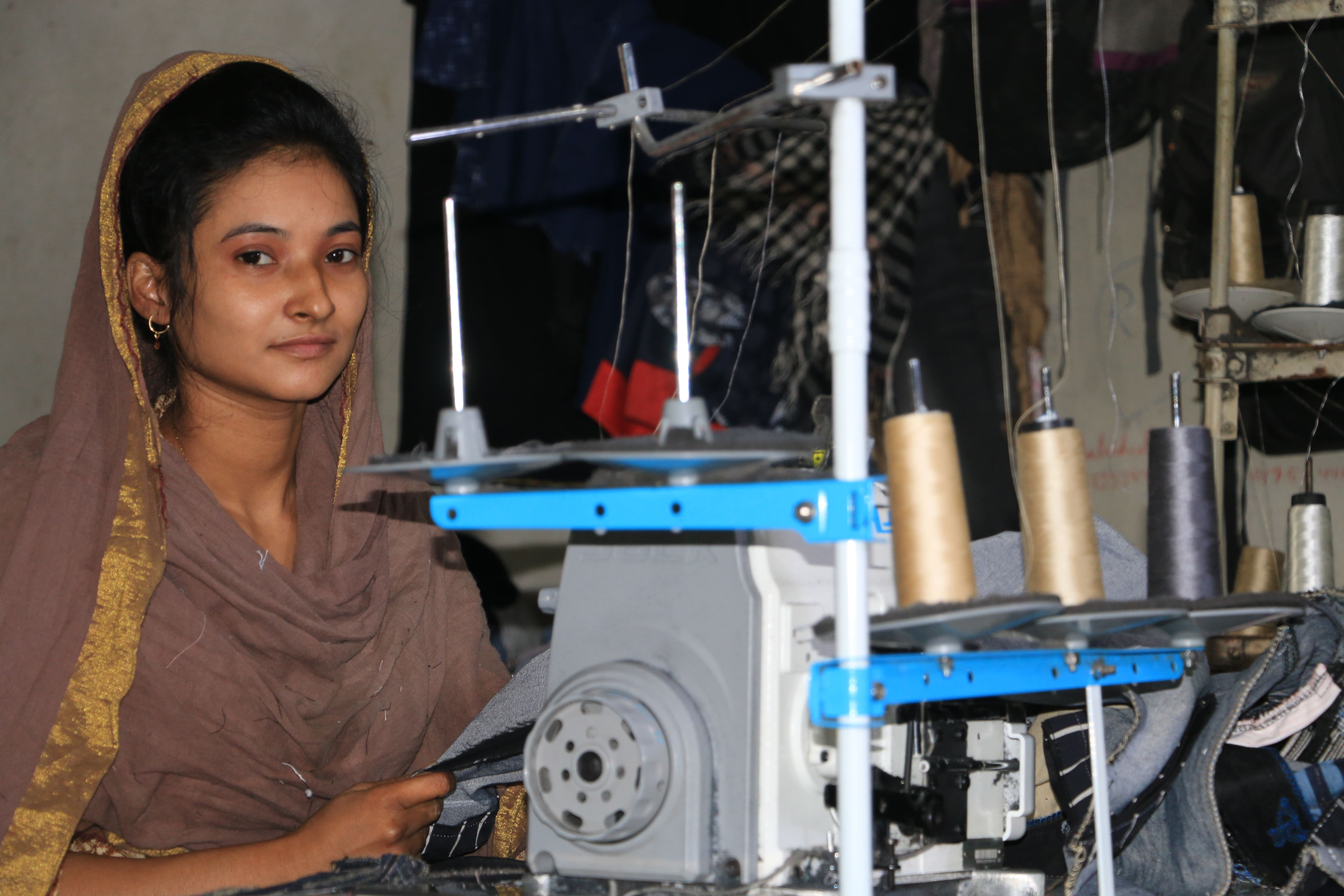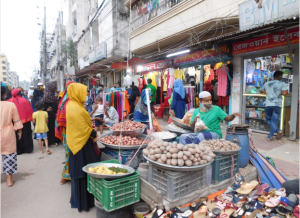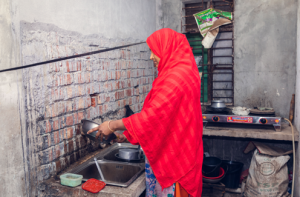
Informal Works
Lack of security in formal sector compelled street vendors to remain informal sector Street vendors are not in a position

More than 4,000 RMG factories situated in Keraniganj, where employing 2,50,000 labour
Around 65,000 manufacturing units and more than 5 million workers engaged in local RMG sector
Local RMG sector in Bangladesh is suffering from an acute decent work deficit with no recognition from the government
110,000+ child workers are engaged in keraniganj local RMG sector where 34% are below 18 years and 17% are below 14 years
The Local Readymade Garment Industry in Bangladesh made a silent revolution. The industry contributed by covering around 80% of local consumption. This local RMG industry mainly uses various inputs including fabric, garment accessories, and allied industries services such as washing, embroidery, labels, packaging, etc. In other words, local garment industries fall between the supply chains of a complete industry that produces and markets a variety of clothes and apparel mainly for local consumers. Very recently a large number of these small-scale industries and workshops were established in different areas of Bangladesh to supply various industrial products and meet the local demands.
It is also estimated that it engaged more than 5 million people. Among these manufacturing industries, about 78% are dedicated to the local market. The local RMG sector in Bangladesh is presently suffering from an acute decent work deficit with no recognition from the government. There are more than 4,000 RMG factories, 250 big markets, 5,000 showrooms in Keraniganj area, employing 2,50,000 labour. It is developed rather haphazardly with private initiatives from local and some outside entrepreneurs who have used their private capital to develop this industry.
Child Labour is a great concern in the local RMG industry. As per a Study on Child labour in Keraniganj Apparel Hub in by BLF, there are about 110,000+ child workers are engaged in regular basis. From the findings, of the total workers in Keraniganj, 34% are below 18 years and 17% are below 14 years. Most of the Child labours are brought from rural areas by the factory owner and most of the workers are either relatives or neighbors of the owners. The owners just provide food to them and they only stay in the factory and sleep on the factory floor. They are frequently denied of their remunerations, engaged in work for interminable hours, confined to unhygienic, unsafe, and unhealthy working conditions resulting in respiratory diseases and physical disabilities, and in one-word bonded labour. BLF is working as a single organization to formalize this sector with regulatory authorities and contribute to achieving SDG-5, SDG-8, and SDG-16 by establishing responsible, democratic, and sustainable local RMG industries.

Lack of security in formal sector compelled street vendors to remain informal sector Street vendors are not in a position

Lack of security in formal sector compelled street vendors to remain informal sector Street vendors play a significant role to

Waste pickers significantly contribute to green economy but not recognized and victim of discrimination 120,000 waste pickers in Dhaka, recycled

Domestic children and women workers suffer silently in Bangladesh. Domestic workers are a highly vulnerable group in Bangladesh. High proportion
F Haque Tower, Level – 7
107, Bir Uttam C.R. Datta Road
Dhaka – 1205, Bangladesh.